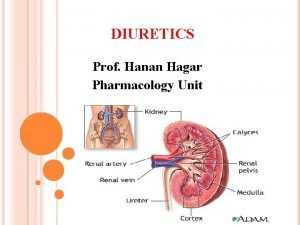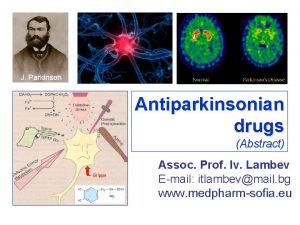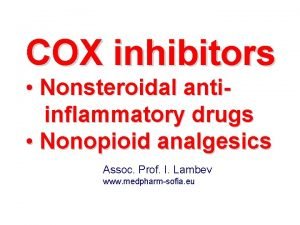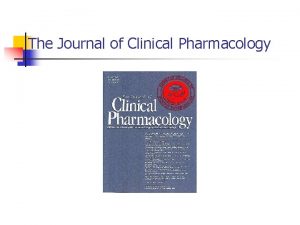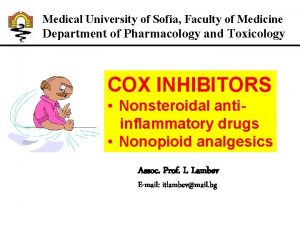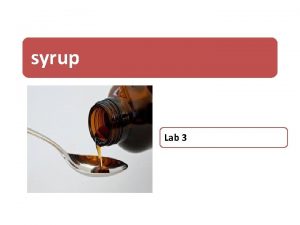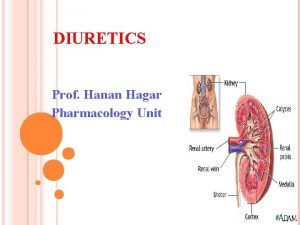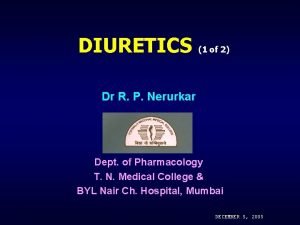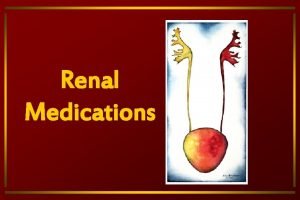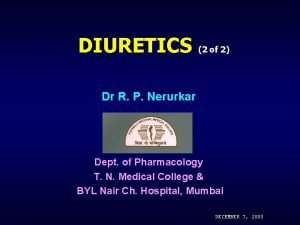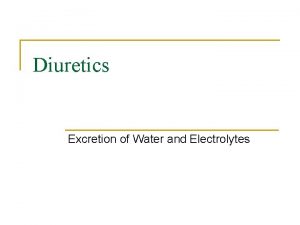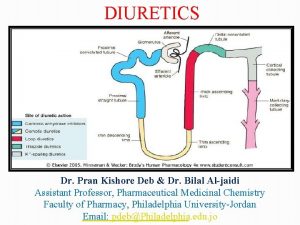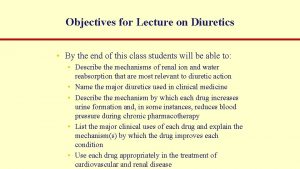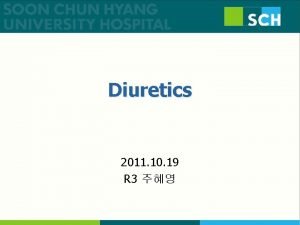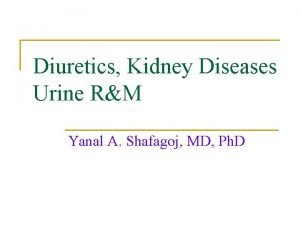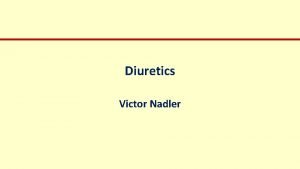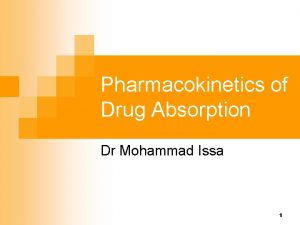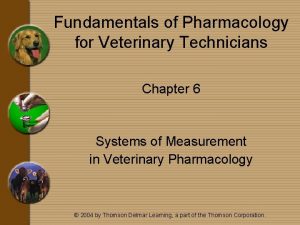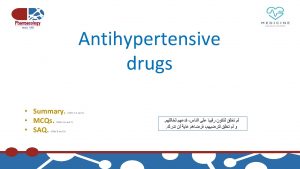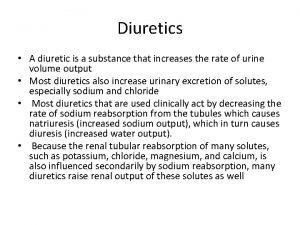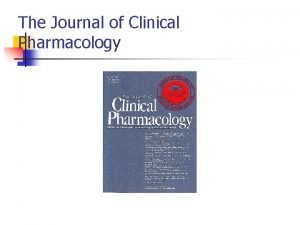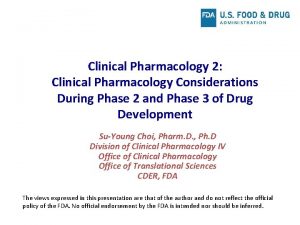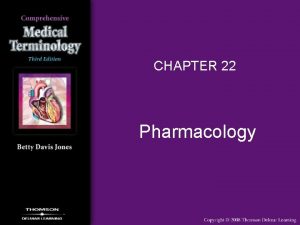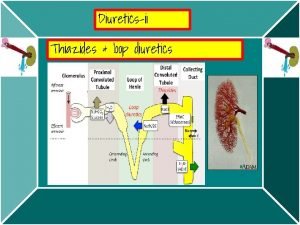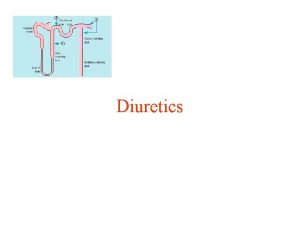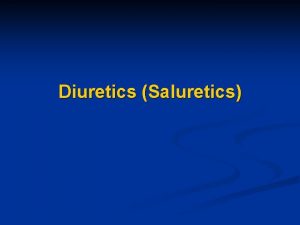Clinical Pharmacology of Diuretics DIURETIC DRUGS diuretics are
































- Slides: 32

Clinical Pharmacology of Diuretics

DIURETIC DRUGS § diuretics are considered to be substances that aid in removing excess extracellular fluid and electrolytes. In the main, they accomplish this by decreasing salt and water reabsorption in the tubules. The different types of diuretic drugs are § Carbonic anhydrase inhibitors § Loop diuretics § Osmotic diuretics § Potassium-sparing diuretics § Thiazides and related diuretics


DIURETIC DRUGS § Diuretics relieve pulmonary congestion and peripheral edema. These agents are useful in reducing the symptoms of volume overload, including orthopnea and paroxysmal nocturnal dyspnea. Diuretics decrease plasma volume and subsequently decrease venous return to the heart (preload). This decrease the cardiac workload and oxygen demand. Diuretics also decrease afterload by reducing plasma volume, thus decreasing blood pressure.

Indications to use

Thiazide and Related Diuretics

Thiazide and Related Diuretics

Thiazide and Related Diuretics

Thiazide and Related Diuretics

Thiazide Diuretics

Loop Diuretics

Loop Diuretics



Loop Diuretics § Loop diuretics are the diuretics of choice when rapid effects are required (eg, in pulmonary edema) and when renal function is impaired (creatinine clearance < 30 m. L/minute).

Loop Diuretics

Loop Diuretics

Potassium-Sparing Diuretics

Potassium-Sparing Diuretics


Potassium-Sparing Diuretics

Potassium-Sparing Diuretics

Potassium-sparing diuretics

Osmotic diuretics

Osmotic diuretics

Digoxin and diuretics § When digoxin and diuretics are given concomitantly, as is common for clients with heart failure, the risk of digoxin toxicity is increased. Digoxin toxicity is related to diureticinduced hypokalemia.






 Insidan region jh
Insidan region jh Diuretic side effects
Diuretic side effects Antidiuretic drugs
Antidiuretic drugs Pharmacology of drugs acting on respiratory system
Pharmacology of drugs acting on respiratory system Adrenal drugs pharmacology
Adrenal drugs pharmacology Dopamine synthesis
Dopamine synthesis Spremicides
Spremicides Clinical pharmacology powered by clinicalkey
Clinical pharmacology powered by clinicalkey Basic & clinical pharmacology
Basic & clinical pharmacology Clinical pharmacology
Clinical pharmacology Clinical pharmacology residency
Clinical pharmacology residency Basic & clinical pharmacology
Basic & clinical pharmacology Clinical pharmacology seminar
Clinical pharmacology seminar Diuretic location of action
Diuretic location of action Simple syrup viscosity
Simple syrup viscosity Hyperuricemia classification
Hyperuricemia classification Side effects of diuretics
Side effects of diuretics Diuretic side effects
Diuretic side effects Definition of physiology
Definition of physiology Loop diuretics mechanism of action
Loop diuretics mechanism of action Diuretics classification
Diuretics classification Pran kishore
Pran kishore Loop diuretics adverse effects
Loop diuretics adverse effects Potassium sparing diuretics site of action
Potassium sparing diuretics site of action Loop diuretics
Loop diuretics Classification of diuretics
Classification of diuretics Potassium sparing diuretics mechanism of action
Potassium sparing diuretics mechanism of action Urine rm
Urine rm Furosemide side effects
Furosemide side effects Potassium sparing diuretics mechanism of action
Potassium sparing diuretics mechanism of action Diuretics classification
Diuretics classification Maintenance dose formula
Maintenance dose formula Pharmacology for veterinary technicians
Pharmacology for veterinary technicians

